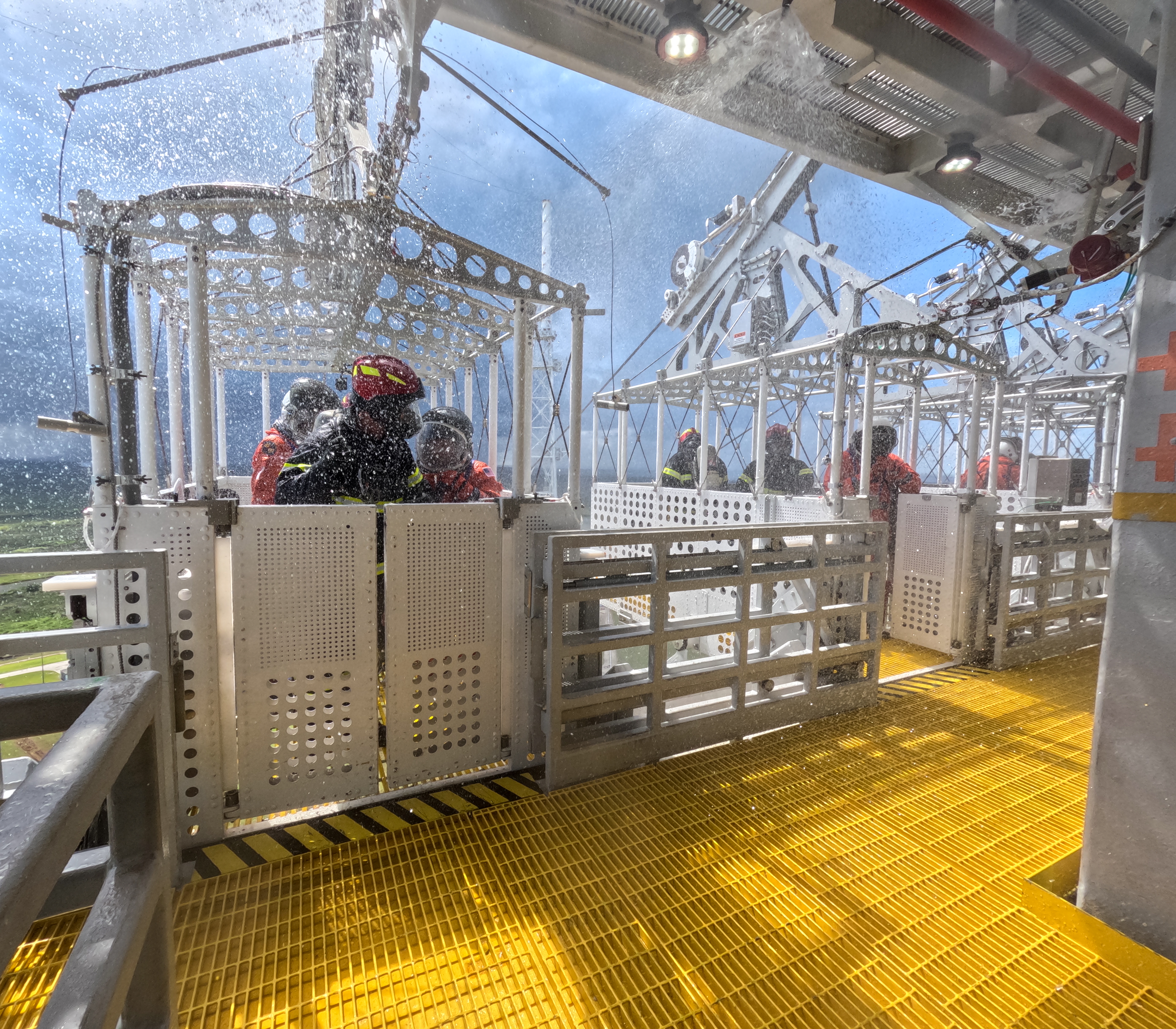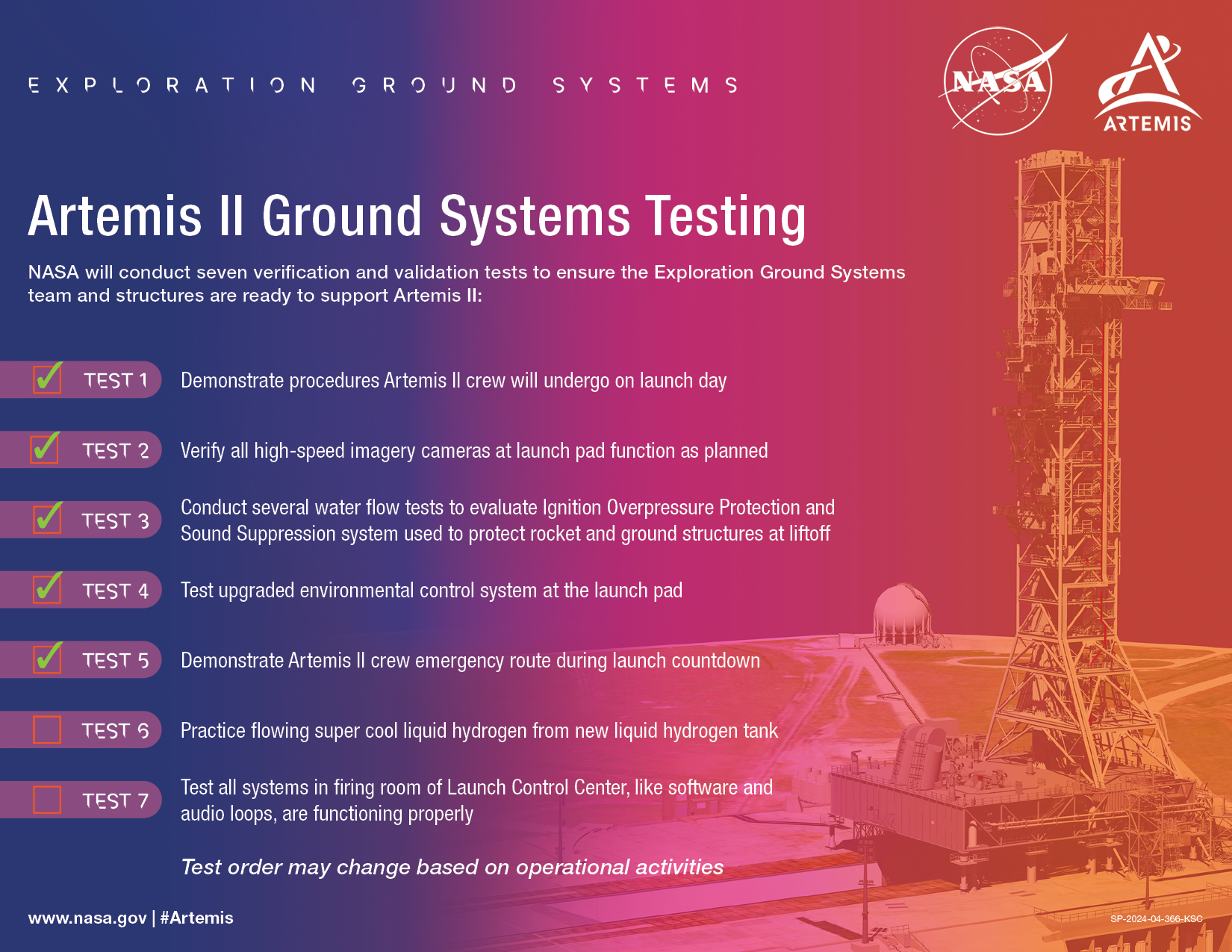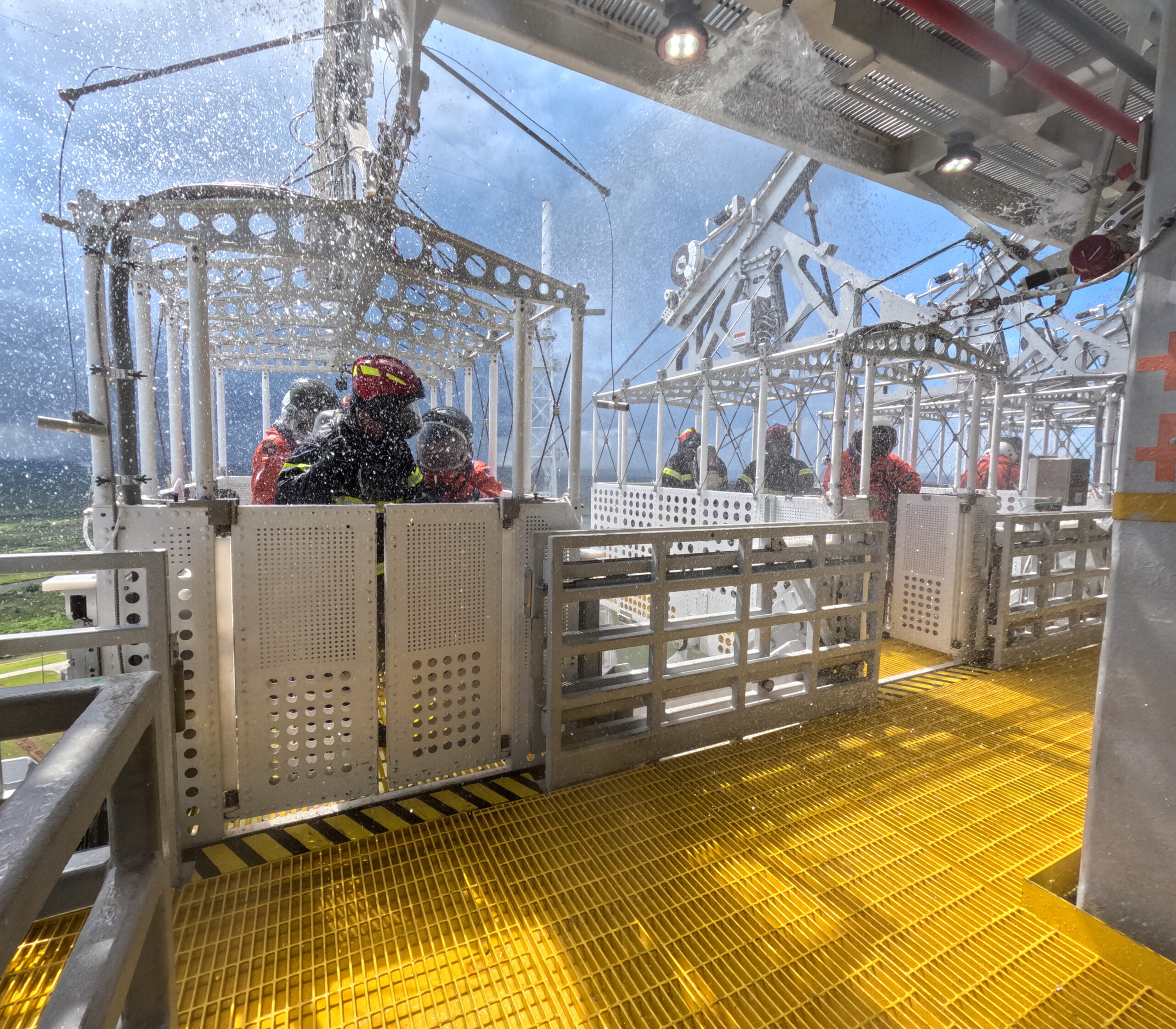
Teams with NASA’s Exploration Ground Systems (EGS) Program at the agency’s Kennedy Space Center completed an emergency egress system demonstration throughout the course of several days at Launch Complex 39B ahead of the Artemis II test flight that will carry four astronauts around the Moon.
The EGS team practiced emergency procedures during day and nighttime launch scenarios with the closeout crew, the team responsible for helping the astronauts get inside the Orion spacecraft, and the Pad Rescue team, which would aid personnel away from the launch pad in an emergency.
Training included exiting the white room in the crew access arm of the mobile launcher, the area where the crew enters and exits Orion, while the fire suppression system was fully activated. The team then evacuated to the terminus area, the location at the perimeter of the launch pad where the emergency egress baskets come to a stop. For this test, personnel did not ride down the baskets, but did have the opportunity to practice getting inside the baskets when on the mobile launcher and exiting them at the terminus area. Once there, armored emergency response vehicles drove the team away to one of the designated safe site locations at Kennedy.

“Our latest integrated ground systems test is about demonstrating the capability of the entire emergency egress response,” said Charlie Blackwell-Thompson, Artemis launch director. “From the time an emergency condition is declared until we have the crews, both flight and ground, safely accounted for outside the hazardous area.”
During a real emergency, personnel will use the emergency egress baskets, which are suspended on a track cable that connects the mobile launcher to the perimeter of the pad. From there, they will travel down the 1,335-foot-long cables where the emergency response vehicles will drive them away to safety. Prior to this test and throughout the course of several months, teams conducted several basket release demonstrations to validate the system.
During this test campaign the Artemis launch team also conducted an emergency egress demonstration simulation to practice how team members would respond to an emergency taking place at the pad during launch countdown.
EGS team members will have another opportunity to practice the emergency egress procedures with the Artemis II crew during a test closer to launch when the rocket is at the launch pad.

